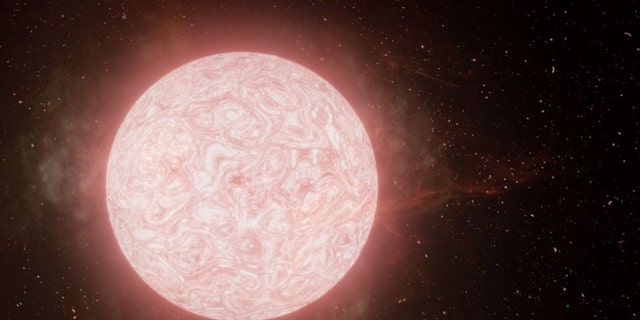air-and-space have captured the death of a air-and-space” target=”_blank”>red supergiant star<
According to a press release from Northwestern, the team observed the red supergiant during the last 130 days before it collapsed into a Type II supernova.
Previous observations showed that red supergiants were relatively inactive before their deaths, without any evidence of violent eruptions or luminous emissions.
These researchers, however, detected bright radiation from a red supergiant in the final year before exploding.
“This is a breakthrough in our understanding of what massive stars do moments before they die,” Wynn Jacobson-Galán, the study’s lead author, said in a statement. “Direct detection of pre-supernova activity in a red supergiant star has never been observed before in an ordinary type II supernova. For the first time, we watched a red supergiant star explode.”
The work – which was conducted at Northwestern before Jacobson-Galán moved to UC Berkeley – suggests that at least some stars must undergo significant changes in their internal structure, leading to the ejection of gas ahead of their collapse.
US COMMITS TO SUPPORT INTERNATIONAL SPACE STATION THROUGH 2030
The star was first detected in summer 2020 by the University of Hawaiʻi Institute for Astronomy Pan-STARRS and the group captured its flash a few months later.
The spectrum of supernova 2020tlf was taken using the W.M. Keck Observatory’s Low Resolution Imaging Spectrometer.

Artistic illustrations of a red supergiant exploding
(W.M. Keck Observatory/Adam Makarenko)
The data revealed evidence of dense circumstellar material around the star at the time of the explosion.
Further monitoring post-explosion and additional data from Keck Observatory’s Deep Imaging and Multi-Object Spectrograph and Near Infrared Echellette Spectrograph helped researchers to determine SN 2020tlf’s progenitor red supergiant star was 10 times more massive than the air-and-space.
“I am most excited by all of the new ‘unknowns’ that have been unlocked by this discovery,” Jacobson-Galán said. “Detecting more events like SN 2020tlf will dramatically impact how we define the final months of stellar evolution, uniting observers and theorists in the quest to solve the mystery on how massive stars spend the final moments of their lives.”
CLICK HERE TO GET THE FOX NEWS APP
The study was supported by air-and-space, the National Science Foundation, the Heising-Simons Foundation, the Canadian Institute for Advanced Research, the Alfred P. Sloan Foundation and Villum Fonden.









